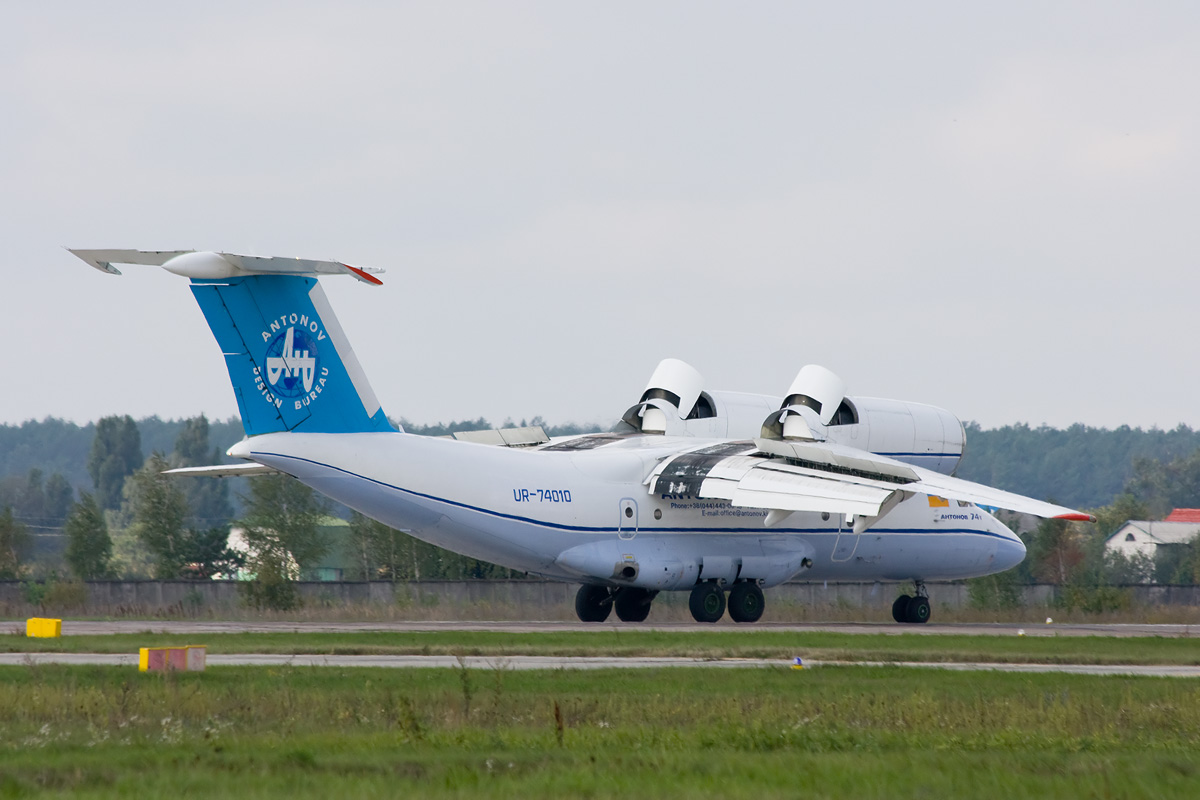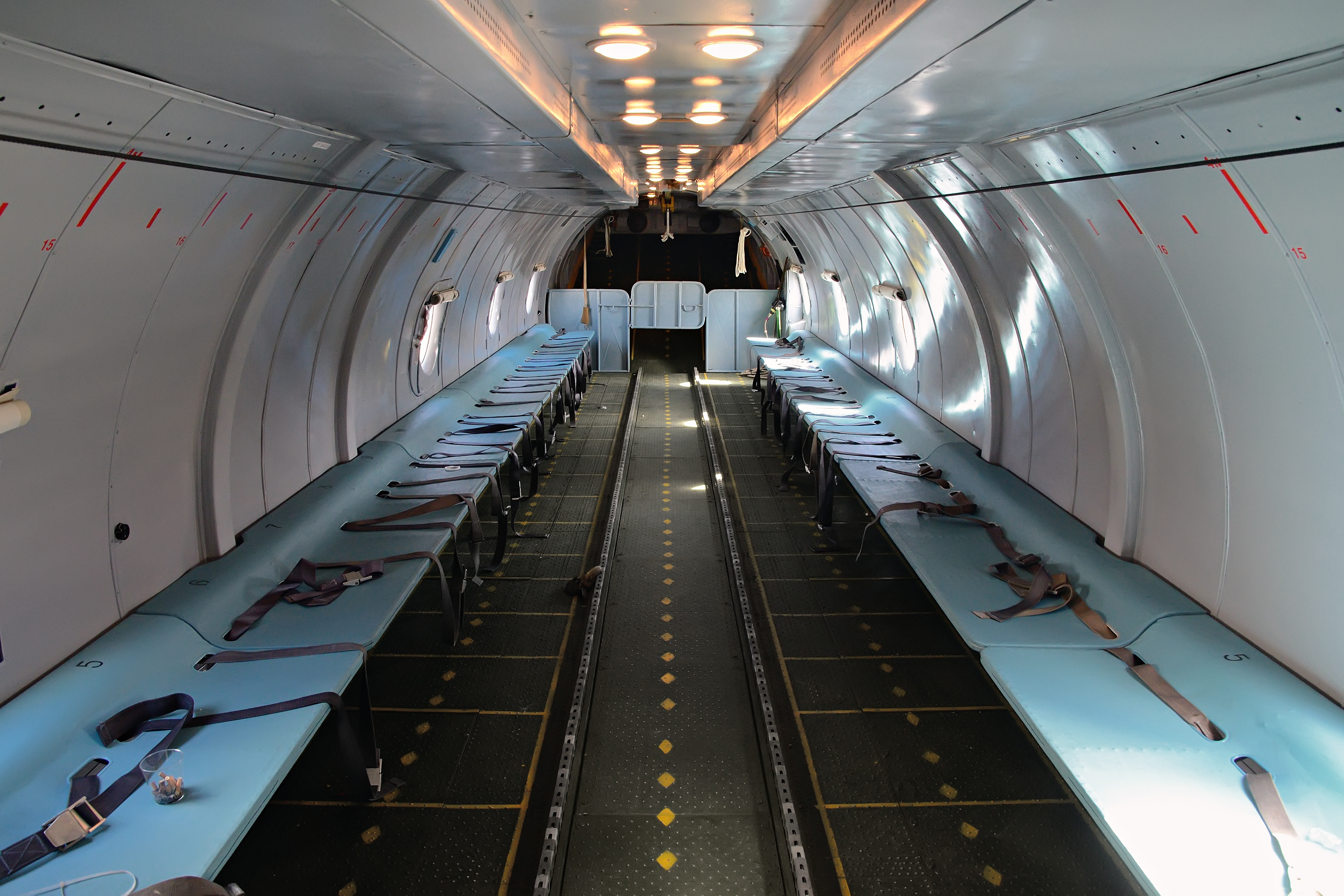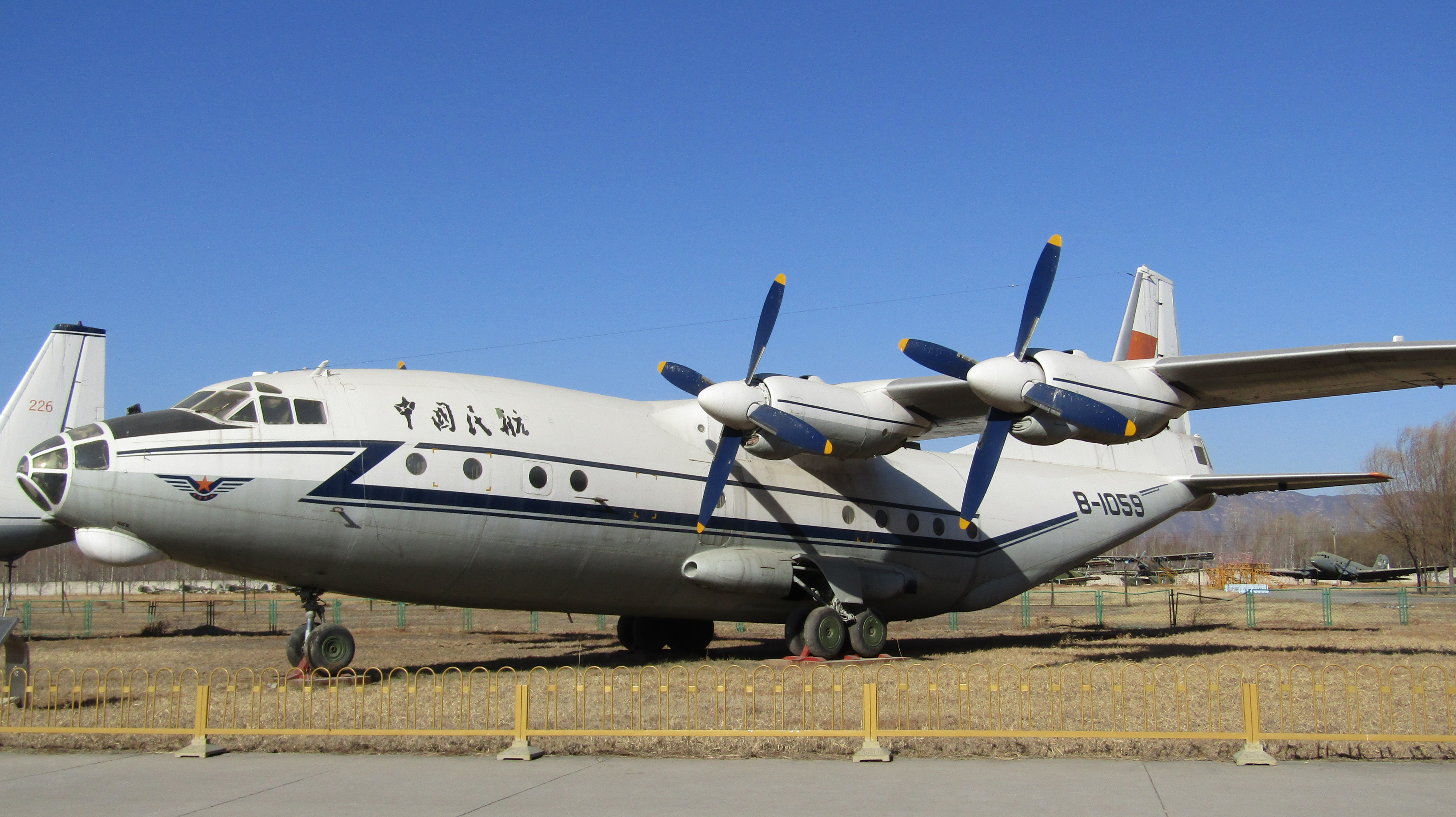|
Ust-Kut Airport
Ust-Kut Airport is an airport in Irkutsk Oblast, Russia which is located 9 km north of Ust-Kut. It services short-haul routes and links the town to Irkutsk and Krasnoyarsk. Airlines and destinations Passenger Cargo Facilities The airport is operational by schedule. A small airport terminal is able to service 50 pax per hour, but it's enough for operation needments. A runway is equipped lighting navigational aids and an instrument landing system. It allows aircraft to perform flights whatever weather conditions. The airport can handle such aircraft as Let L-410, Antonov An-2, Antonov An-12, Antonov An-24, Antonov An-26, Antonov An-30, Antonov An-32, Antonov An-72, Antonov An-74, ATR-42, ATR-72, CRJ-200, Yakovlev Yak-40, Antonov An-140, Antonov An-148, Yakovlev Yak-42, Ilyushin Il-76. File:Crj.JPG, Canadair Regional Jet CRJ-200 on an apron File:Посадка ми-8.jpg, Mil Mi-8 File:Atr-42 усть-кут на перроне.JPG, ATR-42 File:Як-40.jpg, Yakovlev ... [...More Info...] [...Related Items...] OR: [Wikipedia] [Google] [Baidu] |
Public Airport
An airport is an aerodrome with extended facilities, mostly for commercial air transport. Airports usually consists of a landing area, which comprises an aerially accessible open space including at least one operationally active surface such as a runway for a plane to take off and to land or a helipad, and often includes adjacent utility buildings such as control towers, hangars and terminals, to maintain and monitor aircraft. Larger airports may have airport aprons, taxiway bridges, air traffic control centres, passenger facilities such as restaurants and lounges, and emergency services. In some countries, the US in particular, airports also typically have one or more fixed-base operators, serving general aviation. Operating airports is extremely complicated, with a complex system of aircraft support services, passenger services, and aircraft control services contained within the operation. Thus airports can be major employers, as well as important hubs for tourism ... [...More Info...] [...Related Items...] OR: [Wikipedia] [Google] [Baidu] |
Aircraft
An aircraft is a vehicle that is able to fly by gaining support from the air. It counters the force of gravity by using either static lift or by using the dynamic lift of an airfoil, or in a few cases the downward thrust from jet engines. Common examples of aircraft include airplanes, helicopters, airships (including blimps), gliders, paramotors, and hot air balloons. The human activity that surrounds aircraft is called ''aviation''. The science of aviation, including designing and building aircraft, is called '' aeronautics.'' Crewed aircraft are flown by an onboard pilot, but unmanned aerial vehicles may be remotely controlled or self-controlled by onboard computers. Aircraft may be classified by different criteria, such as lift type, aircraft propulsion, usage and others. History Flying model craft and stories of manned flight go back many centuries; however, the first manned ascent — and safe descent — in modern times took place by larger hot-air ... [...More Info...] [...Related Items...] OR: [Wikipedia] [Google] [Baidu] |
Bombardier CRJ100/200
The Bombardier CRJ100 and CRJ200 (previously Canadair CRJ100 and CRJ200) is a regional jet designed and manufactured by Bombardier Aerospace between 1991 and 2006, the first of the Bombardier CRJ family. The ''Canadair Regional Jet'' (CRJ) program, derived from the Challenger 600 business jet, was launched in early 1989. The first CRJ100 prototype made its maiden flight on 10 May 1991. Canada's first jet airliner to enter commercial service was introduced by launch customer Lufthansa in 1992. The 50 seat aircraft is powered by two GE CF34 turbofans, mounted on the rear fuselage. The CRJ200 has more efficient turbofan engines for lower fuel consumption, increased cruise altitude and speed. During the late 1990s, it was stretched into the CRJ700 series. Production ended in 2006 but many remain in service. In 2020, Mitsubishi Heavy Industries purchased the entire CRJ line from Bombardier, and will continue support for the aircraft. Development Origins The CRJ family has its or ... [...More Info...] [...Related Items...] OR: [Wikipedia] [Google] [Baidu] |
ATR 72
The ATR 72 is a twin-engine turboprop, short-haul regional airliner developed and produced in France and Italy by aircraft manufacturer ATR (french: Avions de transport régional or it, Aerei da Trasporto Regionale), a joint venture formed by French aerospace company Aérospatiale (now Airbus) and Italian aviation conglomerate Aeritalia (now Leonardo S.p.A.). The number "72" in its name is derived from the aircraft's typical standard seating capacity of 72 passengers. During the 1980s, French aerospace company Aérospatiale and Italian aviation conglomerate Aeritalia merged their work on a new generation of regional aircraft. For this purpose, a new jointly owned company was established, ATR, for the purpose of developing, manufacturing, and marketing their first airliner, which was later designated as the ATR 42. On 16 August 1984, the first model of the series, designated as the ATR 42-300, performed the type's maiden flight. During the mid-1980s, the ATR 72 was develope ... [...More Info...] [...Related Items...] OR: [Wikipedia] [Google] [Baidu] |
ATR 42
The ATR 42 is a regional airliner produced by Franco-Italian manufacturer ATR, with final assembly in Toulouse, France. On 4 November 1981, the aircraft was launched with ATR, as a joint venture between French Aérospatiale (now Airbus) and Aeritalia (now Leonardo S.p.A.). The ATR 42-300 performed its maiden flight on 16 August 1984 and type certification was granted during September 1985. Launch customer Air Littoral operated its first revenue-earning flight in December of that year. The high-wing airliner is powered by two turboprop engines, Pratt & Whitney Canada PW120s. The number "42" in its name is derived from the aircraft's original standard seating capacity of 42 passengers. Later variants are upgraded with new avionics, a glass cockpit, and newer engine versions. The ATR 42 is the basis for the stretched ATR 72, introduced in October 1989. Development During the 1960s and 1970s, European aircraft manufacturers had, for the most part, undergone considerable c ... [...More Info...] [...Related Items...] OR: [Wikipedia] [Google] [Baidu] |
Antonov An-74
The Antonov An-74 (NATO reporting name: Coaler) is a Soviet/Ukrainian transport aircraft developed by Antonov. It is a variant of the An-72. The An-72 and An-74 get their nickname, , from the large engine intake ducts, which resemble the oversized ears of the popular Soviet animated character of the same name. Design and development The An-74 was initially an upgrade of the An-72 test aircraft, intended to be used in the Arctic and Antarctica; and had the designation An-72A "Arctic". The aircraft's main purpose is to deliver cargo, equipment and personnel over short- and medium-range routes in any climatic conditions ranging from and at any latitude, including the North Pole, and high altitudes. It can operate to and from low grade airstrips such as concrete, pebble, ice and snow aerodromes. Produced in tandem with the An-72, the An-74 can be fitted with wheel-ski landing gear, de-icing equipment and a number of other upgrades allowing the aircraft to support operations in Ar ... [...More Info...] [...Related Items...] OR: [Wikipedia] [Google] [Baidu] |
Antonov An-72
The Antonov An-72 (NATO reporting name: Coaler) is a Soviet/Ukrainian transport aircraft, developed by Antonov. It was designed as an STOL transport and intended as a replacement for the Antonov An-26, but variants have found success as commercial freighters. The An-72 and the related An-74 get their nickname, ''Cheburashka'', from the large engine intake ducts, which resemble the oversized ears of the popular Soviet animated character of the same name. Design and development The An-72 first flew on . Produced in tandem with the An-72, the An-74 variant adds the ability to operate in harsh weather conditions in polar regions, because it can be fitted with wheel-skis landing gear, de-icing equipment, and a number of other upgrades, allowing the aircraft to support operations in Arctic or Antarctic environments. Other An-72 versions include the An-72S VIP transport and An-72P maritime patrol aircraft. Its first flight was made on , but production started in the late 1980s. Th ... [...More Info...] [...Related Items...] OR: [Wikipedia] [Google] [Baidu] |
Antonov An-32
The Antonov An-32 ( NATO reporting name: Cline) is a turboprop twin-engined military transport aircraft. Design and development The An-32 is essentially a re-engined An-26. It is designed to withstand adverse weather conditions better than the standard An-26. Announced at the May 1977 Paris Air Show, the An-32 is distinguished from its predecessor by engines raised 1.5 m above the wing in order to avoid foreign object damage on rough, unprepared air strips. The type features high-lift wings with automatic leading-edge slats, large triple-slotted trailing edge flaps and an enlarged tailplane and a very large increase in power, giving improved take-off performance and service ceiling. The high placement of the engine nacelles above the wing allowed for larger diameter propellers, which are driven by 5,100 hp rated Ivchenko AI-20 turboprop engines, providing almost twice the power of the An-26's AI-24 powerplants.Antonov An-32"Ан нет, Ан есть. Украина «на� ... [...More Info...] [...Related Items...] OR: [Wikipedia] [Google] [Baidu] |
Antonov An-30
The Antonov An-30 (NATO reporting name: Clank), is a development of the An-24 designed for aerial cartography. Development The first aerial survey version of the Antonov An-24 was designed by the Beriev OKB and designated An-24FK. The FK stood for ''fotokartograficheskiy'' (photo mapping). The prototype was converted from a production An-24A at Beriev's No. 49 construction shop during 1966. The An-24FK made its first flight on 21 August 1967, with state acceptance trials being completed in 1970 and civil certification completed in 1974. Redesignated An-30, production began in 1971 at the Antonov factory. 123 production An-30s were manufactured between 1971 and 1980 in Kiev in two main versions. Total production Design The Antonov An-30 is a derivative of the An-24, fitted with an entirely new fuselage forward of frame 11. The fuselage nose is extensively glazed. Housed within the new nose section are the navigator and precise navigational equipment, including an optical si ... [...More Info...] [...Related Items...] OR: [Wikipedia] [Google] [Baidu] |
Antonov An-26
The Antonov An-26 ( NATO reporting name: Curl) is a twin-engined turboprop civilian and military transport aircraft, designed and produced in the Soviet Union from 1969 to 1986.Gordon, Yefim. Komissarov, Dmitry & Sergey. "Antonov's Turboprop Twins". Hinkley. Midland. 2003. Development While the An-24T tactical transport had proved successful in supporting Soviet troops in austere locations, its ventral loading hatch restricted the handling of cargo, and in particular vehicles, and made it less effective than hoped in parachuting men and supplies. As a result, interest in a version with a retractable cargo ramp increased, and the Antonov design bureau decided in 1966 to begin development on the new An-26 derivative, in advance of an official order. The cargo ramp was based on that design and allowed the cargo deck to be sealed and pressurised in flight. When loading cargo, it could either be lowered to allow vehicles to be driven in, or slid beneath the aircraft's fuselage, so th ... [...More Info...] [...Related Items...] OR: [Wikipedia] [Google] [Baidu] |
Antonov An-24
The Antonov An-24 (Russian/Ukrainian: Антонов Ан-24) (NATO reporting name: Coke) is a 44-seat twin turboprop transport/passenger aircraft designed in 1957 in the Soviet Union by the Antonov Design Bureau and manufactured by Kyiv, Irkutsk and Ulan-Ude Aviation Factories. Design and development First flown in 1959, the An-24 was produced in some 1,000 units of various versions; in 2019 there are 109 still in service worldwide, mostly in the CIS and Africa. It was designed to replace the veteran piston Ilyushin Il-14 transport on short to medium haul trips, optimised for operating from rough strips and unprepared airports in remote locations. The high-wing layout protects engines and blades from debris, the power-to-weight ratio is higher than that of many comparable aircraft and the machine is rugged, requiring minimal ground support equipment. Due to its rugged airframe and good performance, the An-24 was adapted to perform many secondary missions such as ice recon ... [...More Info...] [...Related Items...] OR: [Wikipedia] [Google] [Baidu] |
Antonov An-12
The Antonov An-12 (Russian: Антонов Ан-12; NATO reporting name: Cub) is a four-engined turboprop transport aircraft designed in the Soviet Union. It is the military version of the Antonov An-10 and has many variants. For more than three decades the An-12 was the standard medium-range cargo and paratroop transport aircraft of the Soviet air forces. A total of 1,248 were eventually built. Design and development Developed from the Antonov An-8, the An-12 was a military version of the An-10 passenger transport. The first prototype An-12 flew in December 1957 and entered Soviet military service in 1959. Initially, the aircraft was produced at the State Aviation Factory in Irkutsk. From 1962, production was transferred to Tashkent, where 830 were built. Later, production moved to Voronezh and Kazan. In military use, the An-12 has capacity for up to 100 fully equipped paratroopers or 20,000 kg (44,090 lb) of cargo, which is loaded through the rear loading ramp/door. ... [...More Info...] [...Related Items...] OR: [Wikipedia] [Google] [Baidu] |

.jpg)

_-_53Fi2096_(cropped).jpg)






